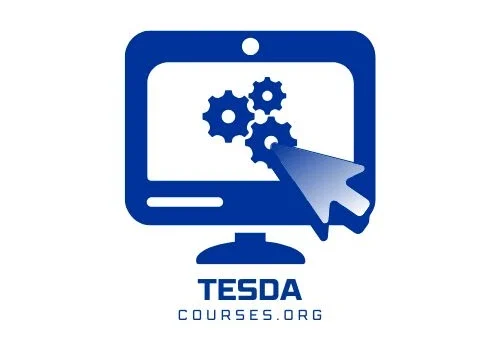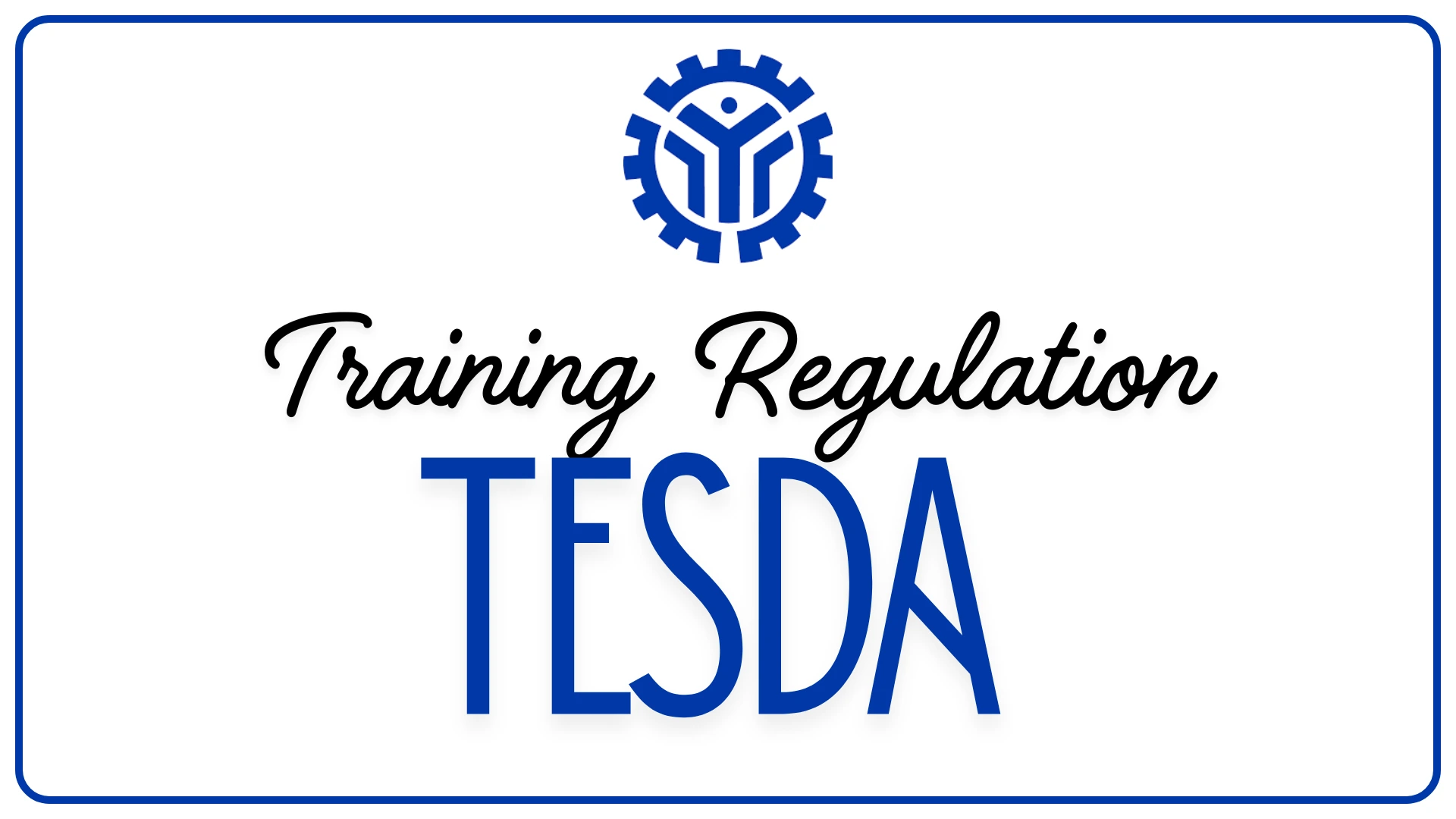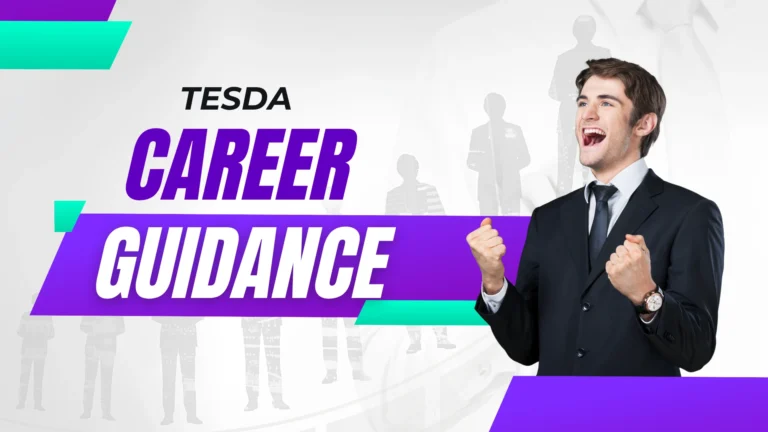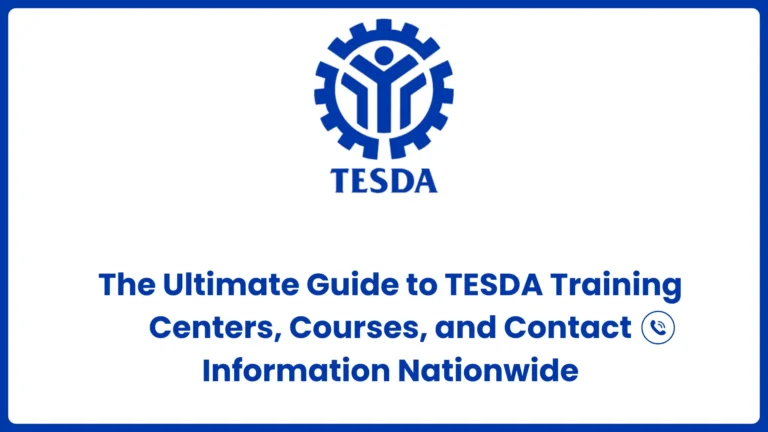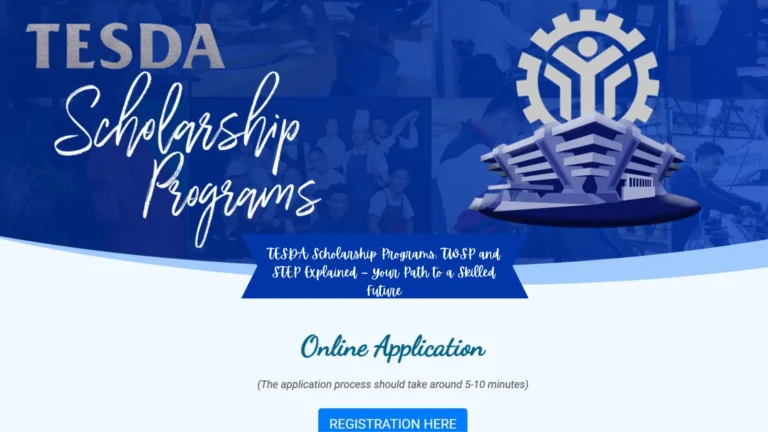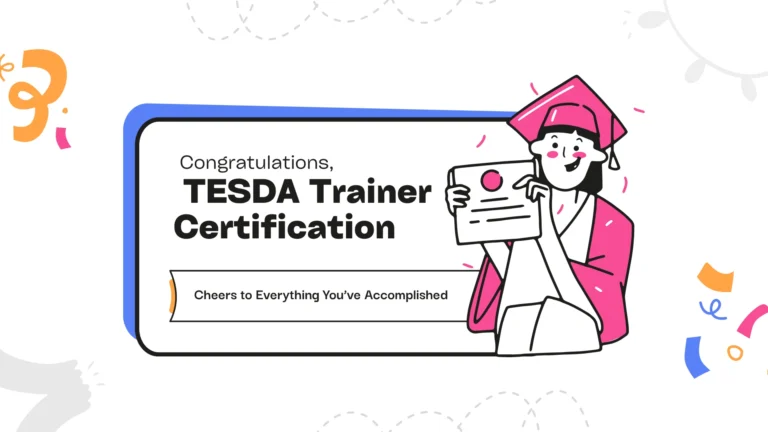TESDA Training Regulation: Your No-Nonsense Guide to Compliance and Standards
Here’s something nobody tells you about technical education in the Philippines: the magic isn’t just in the training—it’s in the rules that make sure that training is actually worth something.
I know, I know. The word “regulation” makes your eyes glaze over faster than a lecture on tax law. But stick with me here, because understanding TESDA Training Regulation is the difference between getting a certificate that opens doors and one that collects dust. Whether you’re an international student navigating the Philippine training system or someone considering becoming a trainer, this guide will make sense of the regulatory maze.
Let’s demystify this thing.
What Exactly Is TESDA Training Regulation?
Think of TESDA Training Regulation as the rulebook that keeps the entire technical education system from turning into chaos. It’s the comprehensive framework of policies, standards, and guidelines that govern how training programs are designed, delivered, and assessed across the Philippines.
Without these regulations, anyone could slap together a “training program,” hand out certificates, and call it a day. With them? Every TESDA-registered program meets minimum quality standards, follows proper curriculum guidelines, and actually prepares you for real work.
It’s the difference between learning to cook from a Michelin-starred chef and learning from your friend who once made instant noodles without burning them.
Why TESDA Training Regulation Matters to You
“But I’m just a student. Why should I care about regulations?”
Fair question. Here’s why:
For Students:
- Ensures your training actually teaches you marketable skills
- Guarantees your certificate is recognized by employers
- Protects you from substandard training programs
- Maintains consistent quality across all TESDA institutions
- Gives you recourse if training quality isn’t up to par
For Training Institutions:
- Provides clear standards to meet and maintain
- Builds credibility and trust with students and employers
- Access to TESDA support and resources
- Legal protection when following proper procedures
- Competitive advantage through accreditation
For Employers:
- Confidence that TESDA graduates meet industry standards
- Reduced training costs for new hires
- Consistent skill levels across different graduates
- Partnership opportunities with training institutions
The Core Components of TESDA Training Regulation
Let’s break down what TESDA Training Regulation policies actually cover:
1. Training Standards and Competency
TESDA Training Program Regulations define exactly what “competent” means in each trade. These standards include:
- Specific skills you must demonstrate
- Knowledge requirements
- Performance criteria
- Industry-aligned competencies
It’s not arbitrary. These standards come from industry consultations, ensuring what you learn matches what employers actually need.
2. Curriculum Requirements
The TESDA Training Curriculum Regulations dictate:
- Minimum training hours
- Learning outcomes for each module
- Teaching methodologies
- Required equipment and facilities
- Trainer qualifications
This means whether you study in Manila or Mindanao, you’re getting equivalent training quality.
3. Assessment and Certification
TESDA Training Assessment Regulations ensure fair and consistent evaluation. They cover:
- Assessment methods and tools
- Competency standards
- Assessor qualifications
- Assessment center requirements
- Certificate issuance procedures
4. Institutional Requirements
TESDA Training Center Regulations specify what training institutions must have:
- Adequate facilities and equipment
- Qualified trainers
- Proper documentation systems
- Safety protocols
- Quality assurance mechanisms
Understanding TESDA Training Regulation Documents
Navigate TESDA Training Regulation Documents like a pro with this breakdown:
| Document Type | Purpose | Who Needs It |
|---|---|---|
| Training Regulations (TRs) | Detailed program standards | Training institutions, trainers |
| Circulars | Policy updates and clarifications | All TESDA stakeholders |
| Advisories | Important announcements | Training centers, students |
| Compliance Forms | Documentation for requirements | Training institutions |
| Assessment Manuals | Evaluation guidelines | Assessors, centers |
TESDA Training Regulation Manual: Your Bible
The TESDA Training Regulation Manual is essentially the constitution of technical training. It outlines:
- Legal framework and authority
- Rights and responsibilities of all parties
- Procedures for program registration
- Compliance requirements
- Enforcement mechanisms
- Appeal processes
Think of it as your insurance policy. When in doubt, the manual has the answer. Available for download from the TESDA website, it’s dense but invaluable.
Latest TESDA Training Regulation Updates
The training world doesn’t stand still, and neither does TESDA. TESDA Training Regulation Updates happen regularly to keep pace with:
- Technological advances
- Industry changes
- International standards
- Feedback from stakeholders
- Economic shifts
TESDA Training Regulation Updates 2025
Recent TESDA Training Regulation Updates 2025 include:
- Enhanced online and blended learning guidelines
- Updated trainer qualification requirements
- New competency standards for emerging technologies
- Streamlined compliance documentation
- Improved monitoring systems
Stay current by checking the TESDA Training Regulation Circular 2025 releases. Missing an update could mean your training doesn’t meet current standards.
Key TESDA Training Regulation Circulars
TESDA Training Regulation Circulars are official pronouncements that clarify policies or introduce changes. Important ones include:
Understanding Circular Numbers:
- TESDA Training Regulation Circular No 1: Usually covers foundational policies
- TESDA Training Regulation Circular No 5: Often addresses specific procedural updates
- TESDA Training Regulation Circular No 10: Typically involves mid-year adjustments
- TESDA Training Regulation Circular No 15: Usually year-end comprehensive updates
- TESDA Training Regulation Circular 20: Often special policy announcements
Each circular has a specific purpose. Keep a file of relevant circulars for your program or institution.
TESDA Training Regulation Compliance: The Essentials
Here’s the thing about compliance—it’s not optional. TESDA Training Regulation Compliance ensures your training is legitimate and your certificates are worth something.
For Training Institutions
TESDA Training Regulation for Institutions requires:
1. Initial Registration
- Complete application package
- Facility inspection approval
- Trainer qualification verification
- Equipment inventory meeting standards
- Compliance with safety regulations
2. Ongoing Compliance
- Annual reporting requirements
- Regular monitoring visits
- Updated trainer credentials
- Maintained facilities and equipment
- Proper student records
3. Quality Assurance
- Internal assessment systems
- Student feedback mechanisms
- Continuous improvement plans
- Industry partnerships
- Graduate tracking
TESDA Training Regulation Compliance Checklist
Use this TESDA Training Regulation Compliance Checklist:
✅ All trainers properly certified ✅ Facilities meet minimum standards ✅ Equipment functional and adequate ✅ Curriculum approved and current ✅ Assessment tools validated ✅ Student records complete ✅ Safety protocols implemented ✅ Required forms submitted on time ✅ Fees properly documented ✅ Monitoring visits accommodated
For Trainers
TESDA Training Regulation for Trainers specifies:
- Minimum qualification requirements
- Continuing professional development needs
- Teaching methodology standards
- Documentation responsibilities
- Assessment participation rules
You can’t just be good at your trade—you need proper credentials to teach it.
TESDA Training Regulation Requirements
Breaking down TESDA Training Regulation Requirements by category:
Facility Requirements
- Adequate classroom space (minimum square meters per student)
- Proper lighting and ventilation
- Safety equipment and protocols
- Sufficient tools and equipment
- Library or learning resource center
Trainer Requirements
- Technical competence in the field
- National Certificate in the relevant qualification
- Trainer’s Methodology Level I (minimum)
- Work experience in the field
- Clear criminal record
Administrative Requirements
- Registered business with DTI/SEC
- Business permit
- Fire safety permit
- Sanitary permit
- Proper insurance coverage
Program Requirements
- Approved Training Regulation
- Complete curriculum and training materials
- Assessment tools and instruments
- Student handbook
- Training schedules
TESDA Training Regulation Implementation
How does TESDA Training Regulation Implementation actually work?
Phase 1: Development TESDA works with industry partners to develop or update training regulations based on actual workforce needs.
Phase 2: Consultation Draft regulations go through consultation with stakeholders—training providers, industry representatives, and sometimes students.
Phase 3: Approval The TESDA Board approves final regulations.
Phase 4: Dissemination Through circulars, advisories, and orientation sessions, TESDA informs stakeholders of new or updated regulations.
Phase 5: Implementation Training institutions align their programs with new requirements.
Phase 6: Monitoring Regular checks ensure ongoing compliance.
The TESDA Training Regulation Implementation Guidelines provide step-by-step instructions for institutions adapting to new requirements.
The Ultimate Guide to TESDA Free Courses Online: Certificates, Allowances, and How to Enroll ?
TESDA Training Regulation Authority
Who actually has the power here? TESDA Training Regulation Authority comes from:
- Republic Act 7796 (TESDA Act of 1994)
- TESDA Board resolutions
- Implementing rules and regulations
- Partnerships with industry
TESDA has real teeth. They can:
- Grant or deny program registration
- Suspend or revoke accreditation
- Impose compliance measures
- Take legal action for violations
Enforcement and Monitoring
TESDA Training Regulation Enforcement isn’t just paperwork. The TESDA Training Regulation Monitoring process includes:
Regular Monitoring Visits:
- Scheduled inspections
- Unannounced spot checks
- Student interviews
- Document verification
- Facility assessments
Compliance Reporting: Training institutions must submit TESDA Training Regulation Compliance Reports showing:
- Enrollment data
- Trainer qualifications
- Facility maintenance
- Assessment results
- Graduate employment rates
Consequences of Non-Compliance:
- Warning letters
- Required corrective action plans
- Suspension of student enrollment
- Program de-accreditation
- Legal penalties
TESDA Training Regulation and Accreditation
Here’s where it gets interesting. TESDA Training Regulation and Accreditation are connected but different.
Registration = Meeting minimum standards Accreditation = Exceeding standards with proven quality
Think of registration as getting your driver’s license and accreditation as being recognized as an excellent driver. Both are valuable, but accreditation gives you extra credibility.
Fees and Payments
Let’s talk about TESDA Training Regulation Fee structures. Different processes have different costs:
| Process | Typical Fee Range (PHP) |
|---|---|
| Program Registration | 5,000 – 15,000 |
| Annual Renewal | 2,000 – 8,000 |
| Program Modification | 3,000 – 10,000 |
| Compliance Assessment | 1,000 – 5,000 |
| Document Processing | 500 – 2,000 |
TESDA Training Regulation Fee Payment methods usually include:
- Bank deposit
- Online payment portals
- Payment at TESDA offices
- Through accredited payment centers
The TESDA Training Regulation Fee Structure is transparent and published on the TESDA website.
The Ultimate Guide to TESDA Training Centers, Courses, and Contact Information Nationwide
Essential Forms and Resources
Need TESDA Training Regulation Forms? Here are the most important ones:
- Program Registration Application
- Trainer Qualification Form
- Compliance Monitoring Report
- Student Enrollment Form
- Assessment Application
- Annual Report Template
Most are available for TESDA Training Regulation Forms Download from the official TESDA website. Fill them carefully—errors delay processing.
Frequently Asked Questions: TESDA Training Regulation FAQs
Q: How often do training regulations change? Major updates happen every 3-5 years, but minor adjustments through circulars happen more frequently.
Q: What happens if my training center doesn’t comply? You’ll receive a notice requiring corrective action. Continued non-compliance leads to suspension or de-accreditation.
Q: Can international students enroll in non-compliant programs? You shouldn’t. Non-compliant programs risk losing registration, making your certificate worthless.
Q: How do I verify if a program follows current regulations? Check the TESDA website for registered programs or request proof of current registration from the institution.
Q: Are online programs subject to the same regulations? Yes, with additional specific requirements for online and blended learning delivery.
TESDA Courses for Abroad: The Ultimate Guide to In-Demand NC II & NC III Certifications
Staying Updated
Don’t let outdated information derail your plans. Stay current with:
- TESDA Training Program Regulation Updates through the official website
- TESDA Training Regulation Advisory emails (subscribe on TESDA site)
- Regional TESDA office bulletins
- Industry association newsletters
- Training provider communications
Set up Google alerts for “TESDA Training Regulation” to catch major announcements.
Resources for Deeper Learning
Want to become a TESDA Training Regulation expert?
- TESDA Training Regulation Guide: Available at TESDA offices
- TESDA Training Regulation Textbook: Used in trainer training programs
- TESDA website’s regulation database
- Regional TESDA office consultations
- Industry association workshops
The Bottom Line
Here’s what you absolutely need to remember about TESDA Training Regulation:
For Students: Always choose registered, compliant programs. Your future career depends on the legitimacy of your certificate.
For Training Institutions: Compliance isn’t optional. It’s your license to operate and your guarantee of quality.
For Everyone: These regulations exist to protect you and maintain quality. Work with them, not against them.
Take Action Now
Ready to navigate TESDA regulations like a pro?
If you’re a student:
- Verify your chosen program’s TESDA registration
- Request proof of compliance
- Understand your rights under TESDA regulations
- Keep copies of all your training documents
If you’re starting a training center:
- Download the complete TESDA Training Regulation Manual
- Assess your readiness against requirements
- Schedule a consultation with your regional TESDA office
- Prepare your application systematically
- Budget for compliance costs
If you’re a trainer:
- Verify your qualifications meet current standards
- Plan for required professional development
- Stay updated on methodology changes
- Join trainer networks for best practices
The TESDA Training Regulation system isn’t perfect, but it’s what keeps Philippine technical education credible, respected, and actually valuable in the job market. Understanding it isn’t just smart—it’s essential.
Don’t navigate this alone. Reach out to TESDA offices, connect with experienced trainers, join industry groups. The regulatory framework might seem overwhelming, but you don’t have to figure it out solo.
Your compliance is someone else’s confidence in your training. Make it count.
For the latest TESDA Training Regulation circulars and updates, bookmark the official TESDA website and check it monthly. Your career—or your training institution—depends on staying current.
